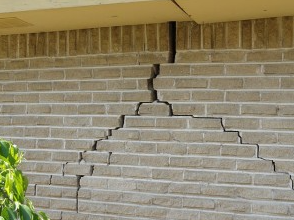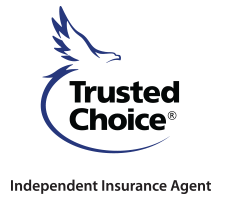WHAT HOMEOWNERS INSURANCE DOES NOT COVER - FLOODS
On the news we have been glued to watching Harvey release his wrath on Texas and the surrounding areas leaving people without homes, jobs and any resemblance of any normal life. It has been 12 years since Katrina left New Orleans a total mess. The aftermaths of hurricanes have had their way with the residents right here in Delaware. Remember Sandy? Many have been left with nothing because they didn’t have flood insurance. Every year in the United States devastating floods occur causing $2 billion in property damage. Because of changing weather patterns, coupled with over development and leveling of forests that reduce the land’s natural ability to absorb water the flood risk for many has increased, including even those who don’t live near water. What you probably don’t know is that 80% of those flooded in Texas did not have flood insurance. So are you protected from a flood and what constitutes a flood anyway?
Until the late 1960’s, most property owners were unable to obtain insurance coverage against flood damage. Private insurance firms, aware of the potential for catastrophic losses were unwilling to assume the financial risk alone. This put the tax burden on taxpayers to provide costly disaster relief to a growing number of flood victims.
Since 1968 not one Homeowners Insurance Policy in the US includes Flood as a covered peril. As a matter of fact, that is when the Federal Government created the National Flood Insurance Program (NFIP). This federal program provides flood insurance at a reasonable cost in exchange for the careful management of flood prone areas by local communities. Local insurance companies through the agency system sell these flood policies. While other insurance policies vary in coverage, all flood policies are the same since the National Flood Insurance Program ultimately dictates their coverages.
Flood insurance covers direct physical loss caused by “flood.” In simple terms, a flood is an excess of water on land that is normally dry. Here’s the official definition used by the NFIProgram. A flood is (1) “A general and temporary condition of partial or complete inundation of two or more acres of normally dry land area or of two or more properties (at least one of which is your property) from a. overflow of inland or tidal waters; b. unusual and rapid accumulation or runoff of surface waters from any source; or c. mudflow*. (2) collapse or subsidence of land along the shore of a lake or similar body of water as a result of erosion or undermining caused by waves or currents of water exceeding anticipated cyclical levels that result in a flood as defined in A.1.a. above.
* Mudflow is defined (in part) as “A river” partial or complete inundation of 2 or more acres of normally dry land or 2 or more properties from overflow of inland/tidal waters, unusual or rapid accumulation or runoff of surface water from any source”…(Please refer to the policy for specific coverage language.)
Today the NFIP insures more than 5 million policyholders in about 20,000 communities across America. It is administered by the Federal Emergency Management Agency, otherwise known as FEMA.
FACTS YOU SHOULD KNOW
- There is a 26% chance of experiencing a flood during the life of a 30-year mortgage compared to a 4% chance of a fire.
- Find out if you are located in a floodplain, which is considered a Special Flood Hazard Area. The local Building or Planning Department has Flood Insurance Rate Maps, which are published by FEMA and are available for public inspection. You may be required by law to have flood insurance in a Special Flood Hazard Area. If the Flood Zone you live in begins with an A or a V, then the area is considered a Special Flood Hazard Area.
- The average premium is approximately $800 a year depending on where you live and how much coverage is selected.
- In low to moderate risk areas coverage can be purchased for as low as $600 a year
- Buy as much flood coverage as you can. Primary residences insured for 80% of their value or maximum amounts available get replacement cost coverage. It pays the amount needed to repair or replace most of the building elements up to the policy limits, without deduction for depreciation, once repairs are made.
- There is a 30-day waiting period from the time a policy is purchased until you are covered. There are exceptions to this rule:
- There is no waiting period if you have an existing flood policy and an additional amount of flood insurance is required with the application, increasing, extending or renewing of a loan. This includes a second mortgage, home equity loan or refinancing. Coverage is effective immediately as long as the premium is presented at or prior to the loan closing.
- There is no waiting period when flood insurance is required as a result of lender determining that a loan should be protected by flood insurance and it currently does not have flood insurance. Coverage is effective immediately as long as the premium is presented at the completion of a loan application.
- There is a one-day waiting period when an additional amount of insurance is required as a result of a map revision. This applies when the map revision is from a Non-Special Flood Hazard Area to a Special Flood Hazard Area. The increased amount of coverage is available 24 hours after the amount of coverage is applied for and the additional premium is paid.
- A flood insurance policy also reimburses you for actions taken to prevent flood damage. For example, costs for moving insured contents in imminent danger of flooding to a safe location are reimbursed up to $1,000 with no deductible. Other costs such as sandbags, plastic sheeting and lumber, pumps, fill for temporary levees and wood to save building can be reimbursed up to a limit of $1,000 with no deductible.
- Additional living expenses, loss of use or loss of profits, as well as business interruption are not covered. This means if you can’t live in the house due to a flood, the policy will not pay for costs of living elsewhere. Also back up of internal sewers or drains or overflow from sump pumps are not covered.
Call our office today for a flood insurance quote, so you are not part of the 80% wondering how their assets will be recovered! Newark – 302-731-0044 and Wilmington – 302-998-2224
What Property is generally not covered under a Flood Policy?
- Recreational vehicles
- Decks
- Patios
- Walkways
- Fences
- Retaining walls
- Swimming pools
- Hot tubs and spas that are not bathroom fixtures
- Money, bills, coins, currency
- Stamps
- Deeds
- Securities
- Valuable papers
- Land
- Trees
- Shrubs
- Lawns
- Plants
- Animals
- Personal property such as paneling, linoleum, carpeting and furniture located on floor level with all sides below grade





















